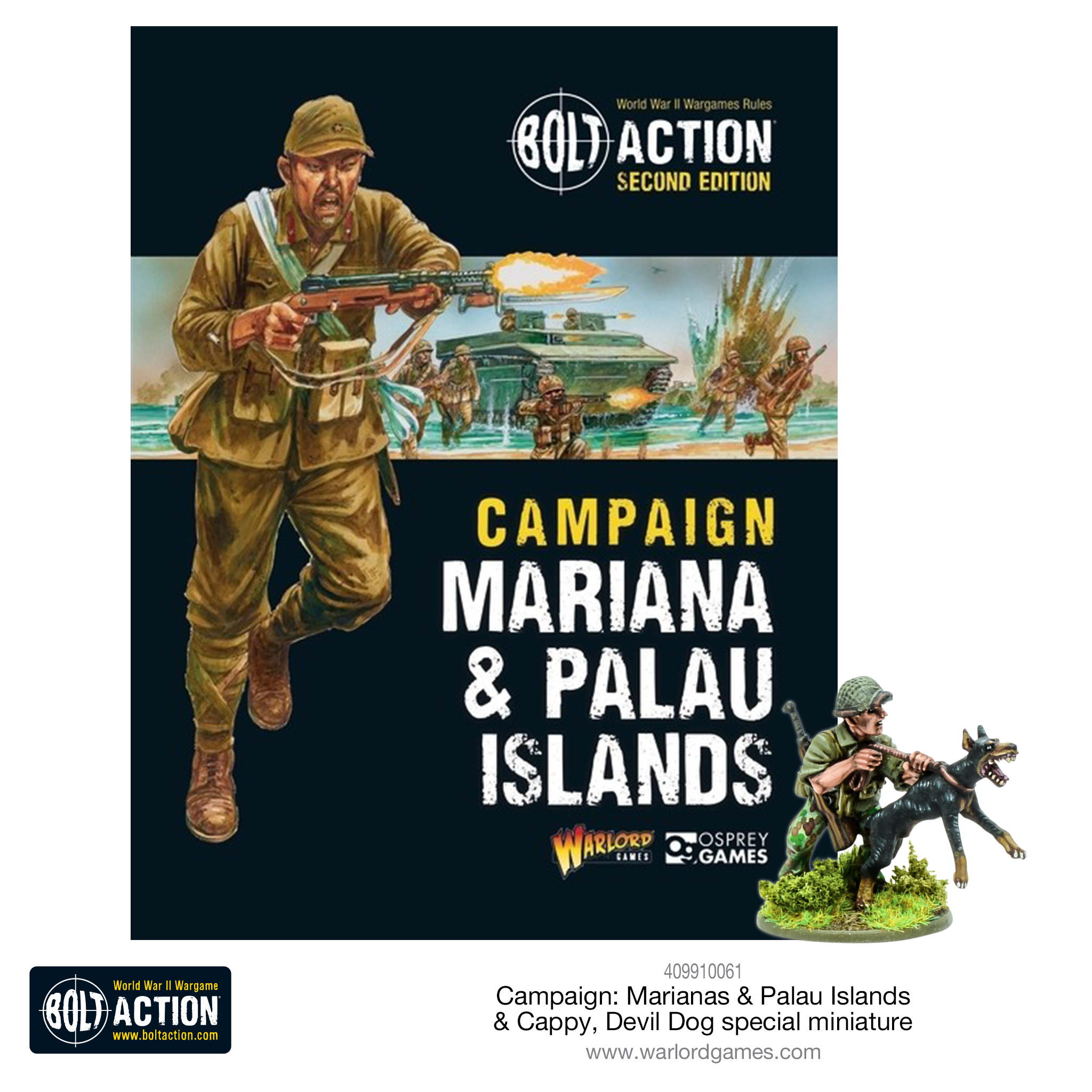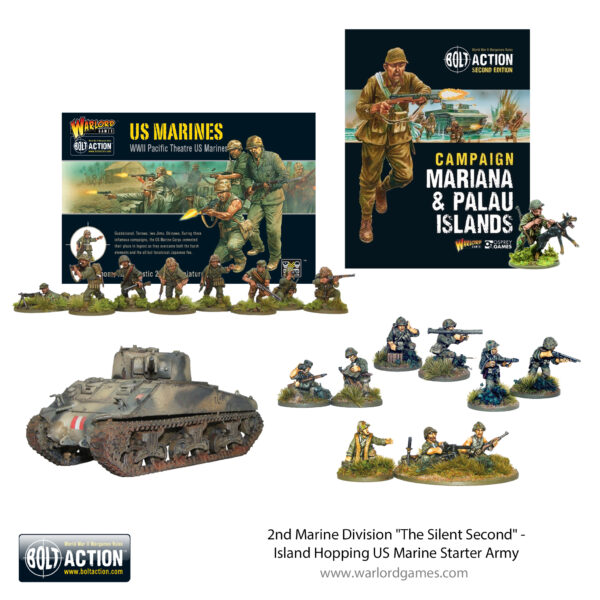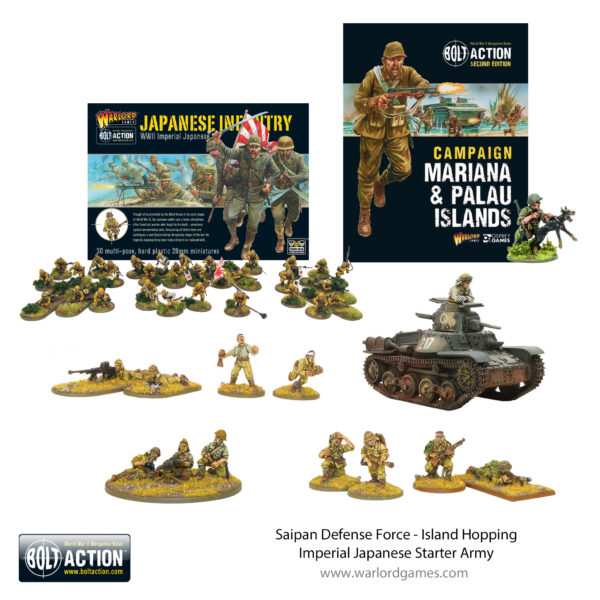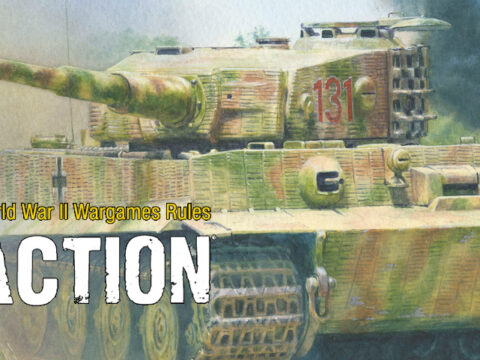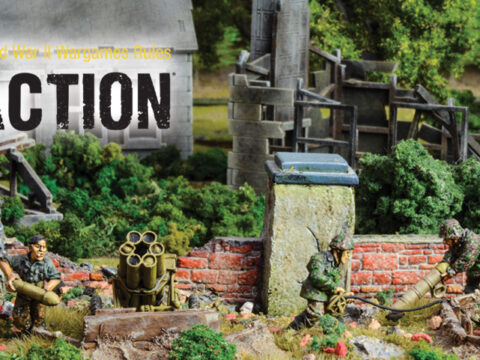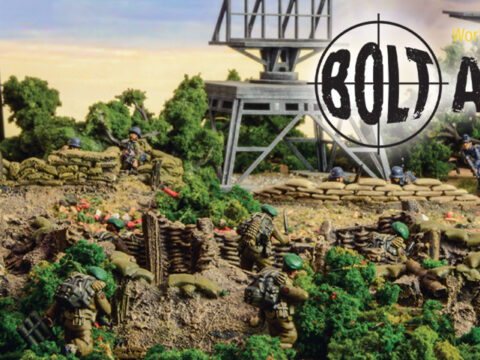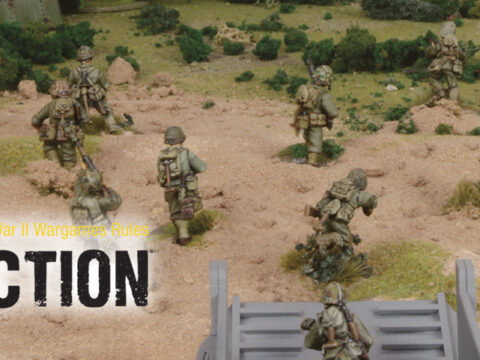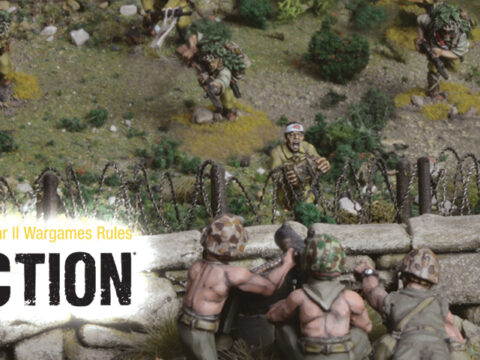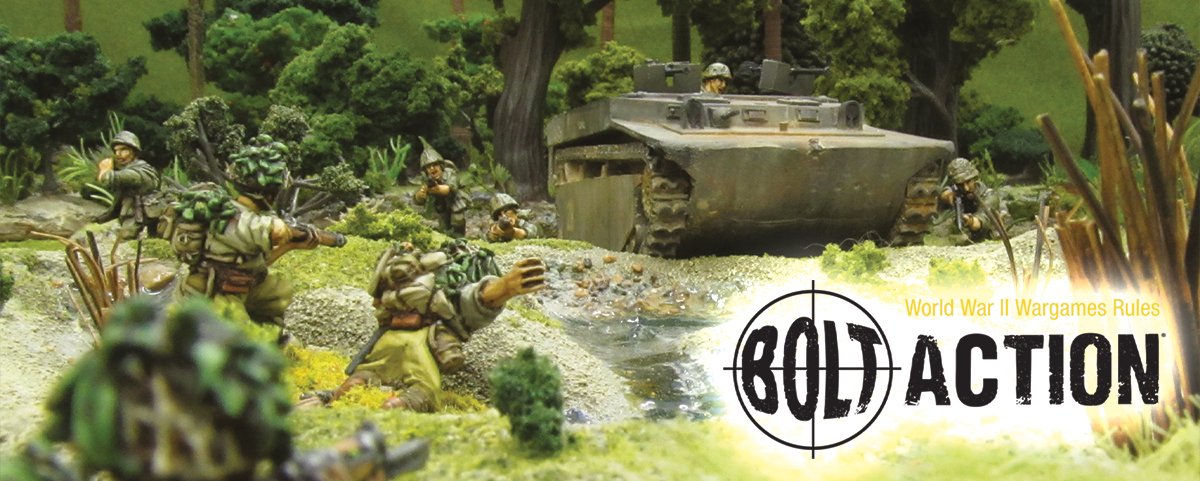
Our Bolt Action Campaign books are chock full of history and scenarios, so much so that sometimes not everything can make the cut. Thankfully we are able to use this platform to share some of these ideas and scenarios with the Warlord Community.
The following is a scenario that did not quite make it into the forthcoming Campaign Book, Marianas and Palau Islands. Nevertheless, we present it here, along with its historical background. If you try out the scenario yourself, we’d love to hear your feedback!
Scenario 22: Ngesebus Island, 28 September 1944
Japanese troops had been transported on barges from Babelthuap, the largest island in the Palaus group. The US Navy had sunk some of the barges, but several hundred Japanese soldiers had made it ashore on 23rd September. If more Japanese troops were landed on Ngesebus they could wade across to Peleliu and surprise the Americans like they had at Guadalcanal. Heavy fire from a pair of Naval guns on Ngesebus, had also become more than a nuisance. The Japanese had being building an airstrip on the island which was both a threat and a desirable possession. These factors made the small island the next high-priority objective of the Peleliu campaign.
The first problem was that the approach road to the island was guarded by a major cave and tunnel complex on a ridge overlooking it. Entrances looked out in three directions with all sorts of cross tunnels and connections on several levels. It was hit over and over by airstrikes and artillery which had little effect. Tanks that moved up the West Road and into full view of the cave were fired down upon by the Japanese and stopped. In the end five amphibious tanks blasted the cave entrances from the channel. A LVT flamethrower under the cover of smoke shells torched every cave. A team of engineers then blasted the entrances shut.
Ngesebus was hardly a mile square, and flat except for one low hill. There were none of the high ridges and limestone cliffs that had made Peleliu a death trap. The channel separating Ngesebus from the northern tip of Peleliu was about five hundred yards across and only four feet deep in places. There had been a wooden causeway between the two islands but it had been destroyed.
Hanneken’s 7th Marines relieved the 1st, who were standing down to the eastern peninsula, where they were to relieve the 5th Marines of their then-passive security role. The 5th was then tasked to capture northern Peleliu, and to seize Ngesebus-Kongauru.
Major John Gustafson’s 3rd Battalion, 5th Marines was given the task of making an assault landing on the island and clearing it in a day. The 3rd Battalion had been reduced from strength of 1,000 to 700 and they would be against 500 entrenched Japanese troops.
About 40 minutes before H-hour, heavy guns on the US battle-ship Mississippi and the cruisers Denver and Columbus fired for forty minutes with 14” and 8” shells. As the LVTs entered the water from Peleliu’s shore at 09.05, the naval gunfire prematurely lifted to the alarm of the assault troops.
Major Robert F. ‘Cowboy’ Stout’s VMF-114 pilots immediately recognized the situation, and resumed their strafing of Ngesebus until the LVTs were within 30 yards of the beach. They flew so low that the watching marines thought they would shoot each other down by their ricochets. This action so kept the Japanese defenders down that the marines in the leading waves were upon them before they recovered from the shock of the strafing planes. It was the first time in the Pacific War that the entire air support of a landing was provided by US Marine Corps Aviation and had arrived on 26 September. The Corsairs would take off from Peleliu’s airstrip and not even raise their landing wheels because in just fifteen seconds they would be over the target, they would then circle to land and rearm.
Thirteen Sherman tanks led the way, waterproof for amphibious operation. Three were swamped, but the rest made it. The marines followed in four waves with a total of 30 new model amtracs and five amtracs with 75mm howitzers that fired almost the whole way across. It took about six minutes to cross the channel.
PFC Gene Sledge listened to some of his buddies argue over whether they’d earn another battle star for the Ngesebus landing, but Sledge, was busy praying that the morning wouldn’t be a repeat of the holocaust on D-Day. There was only scattered fire from pillboxes, no artillery or mortars kicked up the surf as the Corsairs had successfully suppressed the defenders.
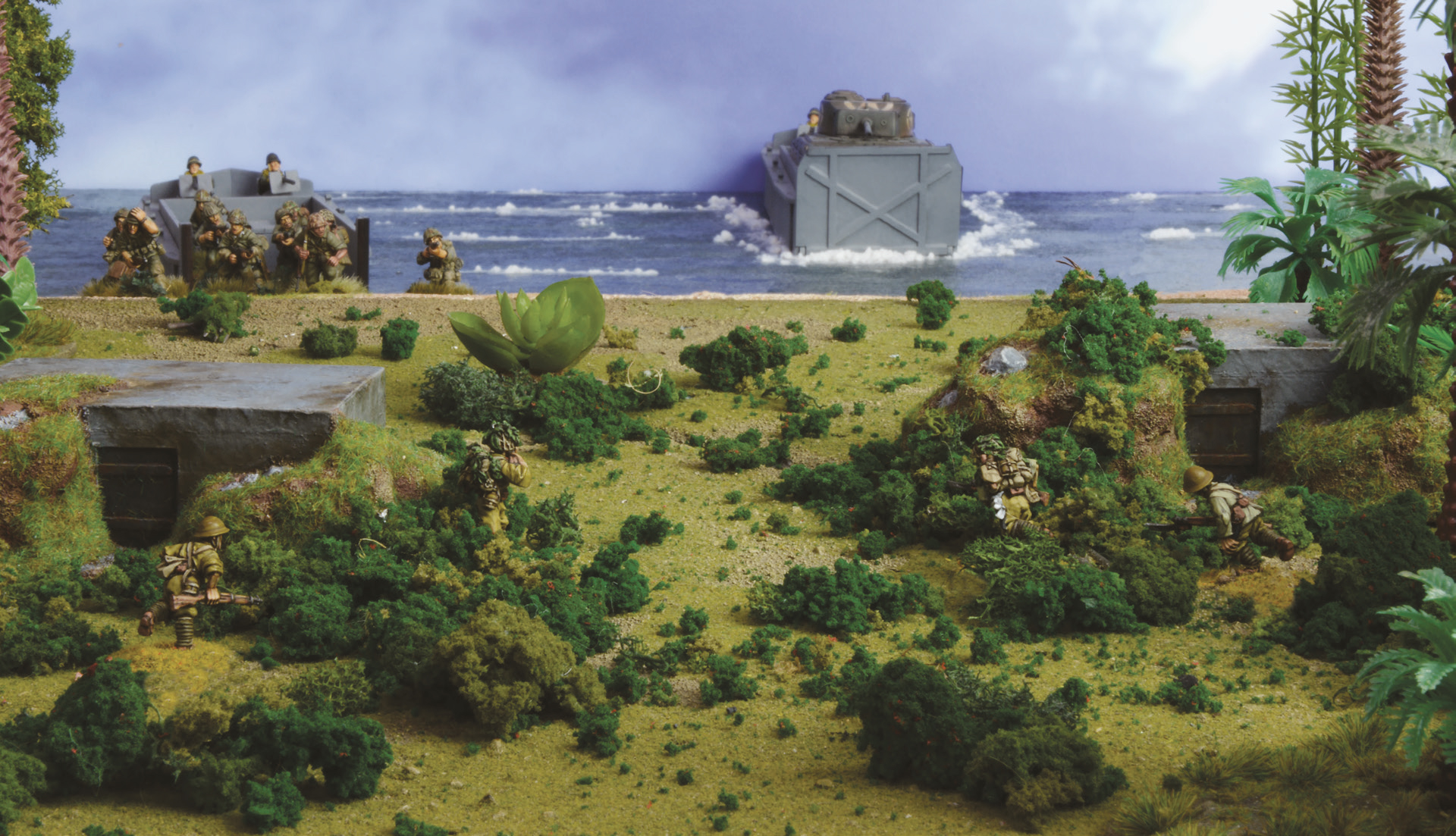
The Scenario
Forces
This scenario represents the landing of the 3rd Battalion, 5th Marines on Ngesebus Island and the clearing of the main bunkers. The USMC player can use any troops from the 1st Marine Division, Peleliu selector apart from on table artillery pieces other than mortars. He has to take the later marks of LVTs.
The Japanese player has one third of the points of the USMC player and can take any troops from the Peleliu selector and has two pill boxes and two earthen bunkers or caves (caves entrances should be placed on the ridge).
Set-Up
The US player sets up one quarter of the way in from his table edge which will be in the sea (US units cannot outflank). The USMC force is set up along the beach and may set-up in LVTs or be dismounted. Shermans enter the edge of the table which is the sea area in front of beach on the second turn.
The Japanese player uses the Hidden Set-up rules in the main rulebook with additional dummy tokens (two for 1000pts, three for 1500pts, four for 2000pts.)
The US player before setting up his units has a preparatory bombardment to represent the naval bombardment. The Preparatory Bombardment is described in the main rules but always happens. However, the Dug in vs Preparatory Bombardment rule does not apply so the Japanese get modifiers for being in cover. This represents the early end of the naval bombardment.
After this there is a Preliminary Airstrike by two regular Corsairs, one armed with bombs and the other with rockets on the Japanese forces using the Special Rules described in this section. It may expose some Japanese units at this stage.
The US player then sets up his forces along the beach.
Special Rules Used
Hidden Set Up Rules with Dummy Units; Amphibious in Shallow Water; Shallow Water; Preliminary Airstrike; Dug In; Dug in Vs Preparatory Bombardment; Japanese Spider Hole Networks; Dug in Against Tanks
Objective
The US Marine player is trying to clear the island.
The Japanese Player is trying to hold his positions. The Japanese player should place three objective markers and for a bigger game than 1,000 points add an extra objective per 500 points. These should be placed across the island, with at least one on the beach, one on the airfield and one on the ridge.
Duration
Duration partly depends on the number of points being used. The game could end on turn 6 for 1,000 points, turn 7 for 1,500 points or turn 8 for 2,000 points. At the end of this turn roll a dice and on a roll of 1-3 the game ends but on 4-6 play one further turn.
Victory!
At the end of the game calculate which side has won by adding up victory points as follows. If one side scores at least two more victory points than the other, that side has won a clear victory. Otherwise the result is deemed too close to call and honours are shared – a draw!
The US Marine player scores one point for each Japanese unit destroyed and two points for each objective taken.
The Japanese player score one point for each US Marine unit destroyed and two points for US Marine Command unit destroyed. The Japanese player also scores two points for each objective held at the end of the game.
The Aftermath
Seizure of Ngesebus by one depleted infantry battalion was made possible by the concentration of support especially airpower destroying 463 of Colonel Nakagawa’s battle-hardened and well emplaced warriors in 36 hours, was at a cost of 15 dead and 33 wounded. Some 50 of the Japanese were killed or captured in the pill boxes on the beach without firing a shot at the approaching USMC waves.
The scheme of manoeuvre called for landing Company K on the left, Company I on the right and Company L in reserve. The assault wave crossed the reef in six minutes and by 0930 all tanks, troop carriers and LVT(A)’s were ashore. The 3d Battalion made the landing with no casualties.
The marines now turned their attention to the cave positions in the ridges and blockhouses. The ridges here, stood individually, not as part of complex ridge systems. This denied their defenders opportunities for a mutual defence between cave positions The attacking companies of 3/5 could use supporting tanks and concentrate fire upon each defensive system, without being taken under fire from their flanks and rear.
The 500 Japanese defenders were nearly all hiding in bunkers and caves bored into a low coral ridge about fifteen to twenty feet that ran from south to north up much of the length of the island. These heavily fortified emplacements sheltered at least two large naval guns, several 75mm field pieces, and dozens of mortars. The only difficult terrain was a cave-pocked ridge along the island’s western shore in the zone of Company K. As the advance swept northward, one platoon of Company L, supported by two tanks and three LVT(A)’s, wheeled to the east and secured the semi-connected island of Kongauru and the unnamed islet beyond it.
By 1700 all of Ngesebus had been overrun by the marines except for an area a few hundred yards in extent at the extreme northern tip, and a few caves in the ridge remained to be demolished. The last Japanese defenders were bottled up in an area measuring about 300 by 500 yards, with no hope of reinforcements or relief. The 3d Battalion completed the seizure the following day on D-plus 14. In the process tanks knocked out a large naval gun and a 75mm artillery piece which had opened point-blank on the approaching infantry. Ngesebus was declared secure at 1500, and was turned over to the 2d Battalion, 321st Infantry. The 3/5 was moved to division reserve in the Ngardololok area.
For some 35 hours, the battalion conducted the most cost-effective single battalion operation of the entire Peleliu campaign. The 3/5 had lost forty-eight men which was officially described as only light casualties and this was true when compared to the 470 Japanese killed and captured during the operation. However, two-thirds of the Third Battalion’s losses were sustained by a single company, K/3/5. Captain Andy Haldane’s unit recorded eight men killed and twenty-four wounded this was as many as the company had lost during the first thirteen days of the Peleliu campaign.
The only disappointment at Ngesebus was the discovery that the island’s soft, sandy soil would not support an airfield, which explained why the Japanese engineers had halted construction of their own fighter strip there.
Corporal R. V. Burgin, a squad leader for a seven man squad of two 60mm mortars and Private First Class Eugene ‘Sledgehammer’ Sledge who was an ammo carrier in this squad have both written down their accounts of this battle. In less than half an hour this mortar squad had left the beach and made its way across a small landing strip and a few dozen yards beyond. The squad came upon a low grey bunker that faced the channel and were ordered to set up their mortars on the other side of it. K Company’s gunny sergeant, W. R. Saunders, also assured them with this order that it was clear.
They had been there around the bunker for a few minutes when Sledge called out. “Burgin, there’s Japs in this bunker!” “I think you’re cracking up, Sledgehammer,” I yelled. “Saunders says it’s clear.” Sledge yelled back. “There’s Japs in this thing. I can hear voices.” Vincent Santos, Snafu, Reedier and Sledge were crouching in front of the bunker, watching several horizontal slits along its wall. Burgin bent to look into one of the slits and a face looked back at him, before he could duck Burgin got off a couple of rounds with his M1 Carbine. There was a sudden commotion in the bunker, and Burgin tried to fire into every corner of the bunker. Suddenly a grenade came bouncing out of one of the side entrances. Everyone dove for cover as it went off. Two or three more grenades followed.
Burgin ordered somebody to take a look in the end of the bunker and tell him what they saw. Sledge poked his head over the embankment and ducked back. Instantly there was a burst of machine-gun fire from inside.
Private First Class John Redifer who was the other ammo carrier, was on his belly above one of the entrances when the barrel of a machine gun poked out and he tried to grab it. Redifer yelled “There’s an automatic weapon in here.” Private First Class Merriel ‘Snafu’ Shelton, the squad’s assistant gunner started an augment and yelled “It’s just rifles.” Santos found a pipe sticking a couple inches above the bunker, probably the same one where Saunders’s riflemen had dropped in their grenades. Santos started dropping grenades down the pipe as fast as he could pull the pins.
There was a moment of silence, then two Jap grenades flew out the side of the bunker. “Most of us were clear, but Redifer and Porter, who were standing closest, raised their arms to shield their faces just as the grenades went off and suffered minor wounds. Burgin decided to go and get an amtrac tank he had seen earlier to blast a hole in the bunker. Four or five Japs scrambled out of the bunker and took off to our right, running for a thicket but were cut down by the mortar squad”.
Burgin on his way to the amtrac found Corporal Charlie Womack, I Company’s flamethrower specialist, and his assistant, Private First Class William Lewis who was armed with a combat shotgun. They were enlisted to help destroy the bunker. The amtrac tank pulled closer to the bunker, then let loose with three or four deafening rounds that left our ears ringing for minutes afterward. One shell had gone clean through. We could see through to the other side. A Japanese soldier suddenly popped up in the hole, waving a grenade over his head and yelling something. Sledge and a couple others fired and he went down still clutching the grenade, which went off where he lay.
Womack and Lewis moved up to about five yards from the bunker. There was a jetlike whoosh, and a flash of heat and a torrent of orange flame splashed against the concrete and through the hole. The squad heard screams, and three more Japs came stumbling out the side, wreathed in flames.
The bunker was divided into a series of compartments separated by low openings. The openings were offset one from another so that a blast in one compartment would not reach the men in the adjoining compartments. Each had a narrow slit to the outside, a firing port. The squad has killed 17 Japanese soldier for two lightly wounded marines. If it had not been cleared it could have remained a major thorn in the side of the marines. Captain Haldane put Burgin up for the Silver Star but would be killed before righting it up. Burgin would be awarded the Bronze Star for his actions in the Battle of Okinawa.
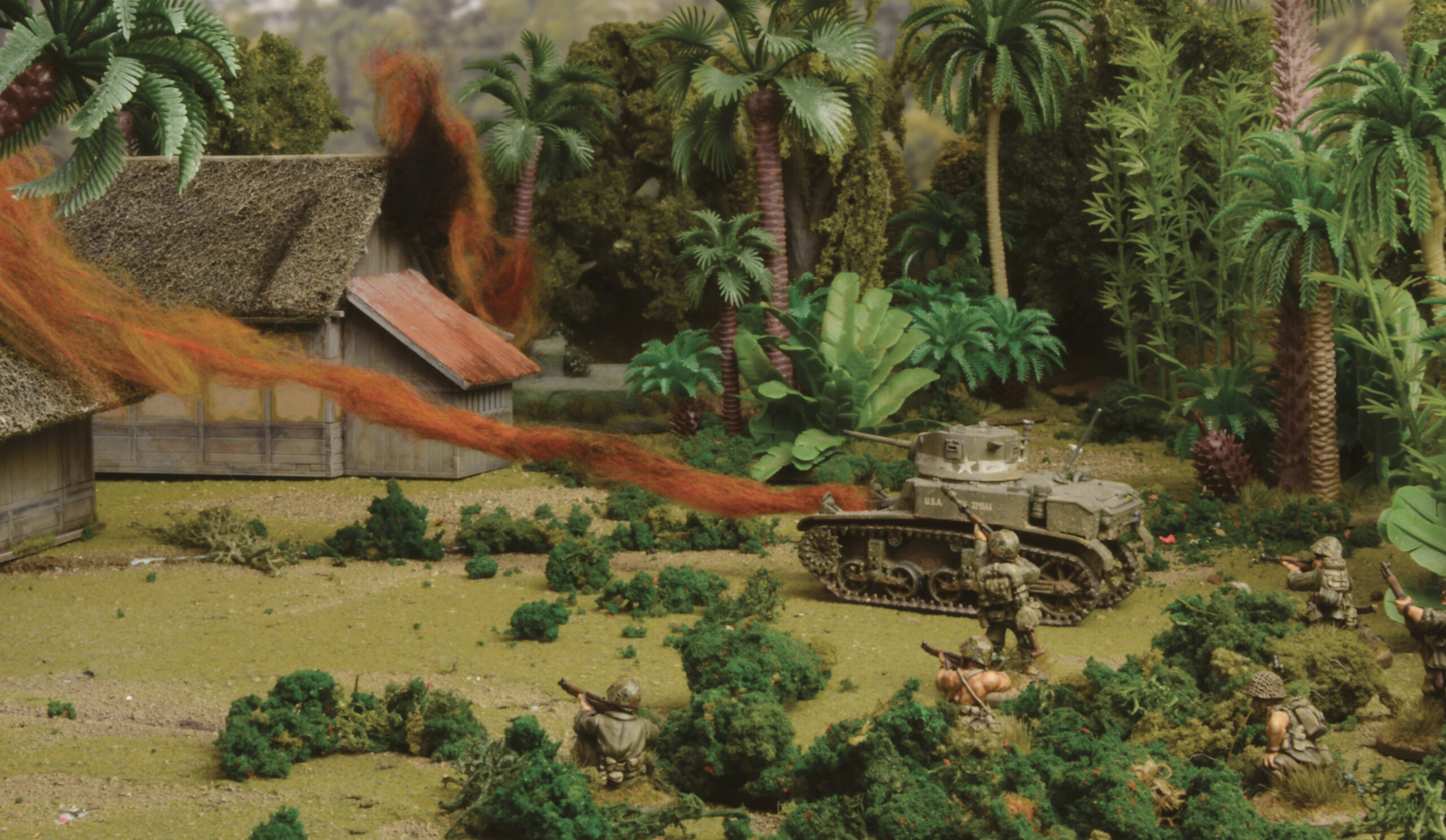
Begin your Island-Hopping Campaign
This new campaign supplement for Bolt Action allows players to recreate the historic island-hopping battles between US and Imperial Japanese forces in the Pacific theatre that took place in 1944. Even whilst the Allies stormed the beaches of Normandy, US forces were beginning to sweep across the Pacific in their own Blitzkrieg, fighting embittered and ferocious battles across tiny strips of land against tenacious Japanese defenders.
Or consider our Island hopping starter army bundles, perfect for quickly assembling a dependable core army for assaulting or defending the islands of both the Marianas and the Palaus.

